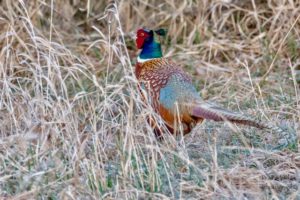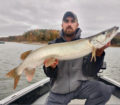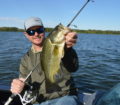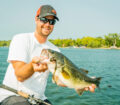By Steve Weisman

(Photo by Bill Beardsley)
Recently, I shared the Iowa DNR release summarizing the results from the August Roadside Survey, a series of 218, 30-mile routes that compile data on the status of ring-necked pheasants, bobwhite quail, gray partridge, cottontail rabbits, and white-tailed jackrabbits. Counts are conducted every year between August 1-15 trying to choose cool mornings when the sun is shining, with heavy dew, and no wind. These get the most consistent results.
These results are put into a detailed 12-page document compiled by Todd Bogenschutz, Wildlife Research Biologist, and Mark McInroy, Wildlife Research Technician. Since the same routes are run during the same time of the year every year, it is easy to make direct comparisons to the previous year, while at the same time long-term trends can be easily made. This data has been collected each year since 1962! The following data is taken from the 2020 document.
Results point toward a better pheasant hunting season than in 2019 with a statewide average of 20.2 birds per route compared to last year’s 17 birds per route. According to Bogenschutz, the dew conditions were excellent in the eastern third of the state, but the dry condition in the western two-thirds of the state made the counts more variable and somewhat suspect. “In the western and central regions where we counted fewer birds, we struggled to get good survey conditions, so the results are not likely representative of actual numbers,”
Bogenschutz said. “Pheasant populations in these regions appear higher than last year, according to casual staff reports, even though the survey says the population is essentially unchanged.”
If this holds true, there is a good chance that the numbers here in the northwest are above what has been reported. In the past few years with the wet years, the corn harvest in northwest Iowa was later with a lot of corn fields still in when the end of October rolled around. With the drought conditions this year, the corn harvest was already starting in mid-September. So, it is likely that most or all of the corn will be harvested by the October 31 season opener. With no standing corn for a sanctuary, pheasants will be forced into traditional upland habitat. This will potentially make for a better opener, but there will likely be fewer birds around for the late season hunters.
Weather and Habitat
Favorable weather + good upland habitat = increased pheasant numbers. These two factors are the most important when we talk about pheasant numbers. This past winter was much less harsh than recent winters, and our spring not as wet. Statistically speaking, last winter was the mildest since 2012 and the spring rainfall was manageable for pheasants. As a result, winter hen survival, nesting and brood survival was better than in the past few years.
Here, in northwest Iowa – Clay, Cherokee, Dickinson, Emmet, Palo Alto and Osceola counties – we are blessed with excellent public hunting areas. Plus, there are still more CRP acres in this six-county area. As a result, the favorable winter/spring weather and the upland hunting acres point to a good pheasant hunting season.
Projected Harvest
Bogenschutz notes, “Given this year’s statewide index of 20 birds per route Iowa, pheasant hunters should harvest approximately 250,000 to 350,000 roosters this fall.” So, things look to be similar to that of the past several years.
However, when we start talking harvest numbers and the quality of the harvest, this is a far cry from the time when Iowa was actually THE go-to pheasant hunting state. Thus, we are where we are with the habitat we have, and we continue to be at the whim of Mother Nature and our weather patterns.
How about this? Since 1962, pheasant hunters have harvested more than one million birds 33 times. Since 2000, however, that’s only happened two times. Why the change? Those two same factors: favorable weather + good upland habitat. Certainly, farming practices have changed over the past 50 years, the soil bank years have come and gone and so has the peak of the Conservation Reserve Program. Bogenschutz and McInroy reflect on the habitat trends. “Since 1980, Iowa has lost 2,886 square miles of potential pheasant habitat. To put this loss in perspective, 2,886 miles is a strip of habitat 10 miles wide, that would stretch from Omaha to Davenport.”
They also discuss the 2018 Farm Bill. “The 2018 Farm Bill increased the CRP program from a 24 million acre to a 25 million acre program. Nationally USDA reports 22.4 million acres enrolled in CRP, as of June 2019. The USDA’s June report on CRP shows Iowa has 1,706,320 acres enrolled, with 327,930 acres expiring in September 2020. Opportunities to enroll additional land into CRP in Iowa seem very limited. The 2018 Farm Bill changed rental payments so landowners do not receive fair market rent for their land, which has reduced interest in the program. USDA is expected to hold another general signup in the fall of 2020.”
Gray Partridge
The 2020 gray partridge count was 2.0 birds per 30-mile route with partridge habitat being in the wide-open agriculture lands of the northern 2/3 of the state. The county for numbers in northwest Iowa was in Emmet County. Most partridge are considered a bonus bird by pheasant hunters.
Bobwhite Quail
Iowa’s quail average was 0.74 birds per route, basically the same as in 2019. The southwest region is the best area to hunt quail where there is a good mix of shrubs, ag fields and weedy cover. Hunters are expected to harvest around 20,000 quail this fall, similar to that of 2019.
















